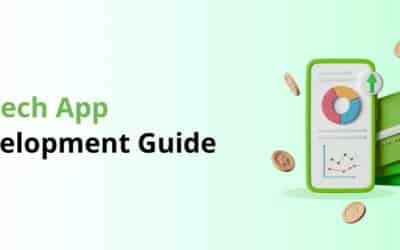Summary of the Article
Have a project in mind?
Schedule a CallRevolutionizing In-App Purchases: Apple’s StoreKit and External Purchase Links
Summary of the Article
*A groundbreaking announcement from Apple empowers US app developers to offer external purchase options alongside traditional in-app purchases (IAP), marking a significant shift in policy.*
Reasons Behind Apple’s Policy Transformation:
Responding to Evolving User Preferences: Studies reveal a growing appetite for alternative payment methods beyond in-app purchases. By allowing developers to offer external options, Apple caters to this demand, fostering a more inclusive and flexible app ecosystem that better aligns with user preferences.
Addressing Regulatory Pressures: In response to mounting scrutiny surrounding app store dominance, Apple seeks to demonstrate an openness to alternative solutions. This move promotes competition and user choice, potentially addressing regulatory concerns.
Empowering Developer Innovation: This change unlocks new possibilities for developers. By leveraging their payment infrastructures and exploring innovative commerce models, they can enhance user engagement, diversify revenue streams, and gain greater control over their business models.
While the potential benefits are significant, it’s essential to approach this development with a nuanced understanding. Let’s delve deeper into the various implications for the stakeholders involved.
Overview of the Updated App Store Review Guidelines
Apple’s recent App Store Review Guidelines changes have brought important updates concerning in-app purchases on the United States iOS or iPadOS App Store. One significant revision is the movement of the requirement that apps and their metadata may not include buttons, external links, or other calls to action that direct customers to purchase mechanisms other than in-app purchases.
This clarification, now found in guideline 3.1.1(a), emphasises that apps offered in storefronts, other than those eligible for the StoreKit External Purchase Link Entitlement (US), must continue to adhere to this requirement. The updated guidelines introduce a new addition, guideline 3.1.1(a), which allows developers to apply for the StoreKit External Purchase Link Entitlement (US).
By clarifying the requirements and introducing the StoreKit External Purchase Link Entitlement (US), Apple aims to strike a balance between providing a seamless user experience and allowing developers to explore additional purchasing options within their apps.
This entitlement empowers developers to include a link within their app that directs users to a website owned or maintained by the developer, providing an alternative avenue for purchasing digital goods or services. Here is the view which will be shown to the user while opting for the external payment link option.

Move Towards Security & Privacy
While external purchase options offer potential benefits, security and privacy remain paramount concerns:
Strict Adherence to Guidelines: Developers must meticulously follow Apple’s stringent guidelines and relevant regulations to avoid app store rejection or legal repercussions. Implementing robust security measures is crucial to safeguard user data and transactions.
Seamless and Secure User Experience: Integrating external purchase options seamlessly and securely is essential. This involves employing secure protocols, transparent data handling practices, and clear communication of risks and user responsibilities.
Robust Customer Support: Developers must be prepared to handle customer inquiries and issues related to external purchases. Establishing efficient support infrastructure and addressing concerns promptly are critical for maintaining user trust and satisfaction.
The responsibility for secure transactions and data privacy now falls entirely on the developer when using external purchase options. This necessitates a proactive approach to security, transparency, and responsive customer support, ensuring a safe and trustworthy experience for users venturing outside the familiar IAP framework. For more information, please refer to Apple Documentation.
Opportunities, Challenges, and Considerations for Developers
The StoreKit External Purchase Link Entitlement presents both opportunities and challenges for developers and their clients:
Opportunities: Lower fees, wider audience reach, catering to specific user preferences, and exploring innovative commerce models are potential benefits.
Challenges: Implementing secure external purchase options, adhering to strict guidelines, ensuring compliance, providing efficient customer support, potential changes in purchase workflows, and navigating potential user resistance to change require careful planning and resource allocation. Developers must provide detailed transaction reports to Apple, adding administrative burden.
Considerations: Carefully weigh the pros and cons based on your app’s target audience, budget, and technical expertise. Partnering with experienced payment processors and seeking legal counsel can ensure smooth implementation and compliance. Open communication with the tech team regarding security practices, data privacy policies, and support channels is essential. Understanding any additional fees or potential risks associated with external purchases is vital before opting for these options.
Apple still charges a commission on transactions initiated within seven days of a link-out, impacting developer profit margins. Apple’s commission will be 27% on proceeds you earn from sales (“transactions“) to the user for digital goods or services on your website after a link out, provided that the sale was initiated within seven days and the digital goods or services can be used in an app.
For European Application Owners
Apple has introduced new business terms for iOS apps in the European Union (EU), which includes a Core Technology Fee (CTF). Under these new terms, developers can choose to distribute their iOS apps via the App Store or alternative app marketplaces in the EU, and they also have the option to use alternative payment processors within their apps and/or after linking out to your webpage from your app.
An important point to note is the Core Technology Fee is based on the number of first annual installs for an app in 12 months. Developers who are a part of the Apple Developer Program get one million first annual installs per year for free for apps distributed from the App Store or alternative marketplaces. However, for apps that exceed one million first annual installs in the EU, developers will be charged a fee of €0.50 for each install over that threshold. This new fee structure is set to take effect in March for developers who have agreed to these new terms. To help developers understand the potential financial implications of these new terms, Apple has provided a fee calculator tool. This tool allows developers to estimate their potential CTF based on historical install data and projected future growth.
Conclusion
Apple’s StoreKit External Purchase Link Entitlement marks a significant leap forward, ushering in a new era of choice and flexibility in the world of in-app purchases. While complexities exist, this change holds immense potential to foster innovation, competition, and, ultimately, a more user-centric app ecosystem.
However, embracing this shift responsibly is crucial. Developers must prioritize user experience, security, and compliance to ensure a smooth transition and maintain user trust. Meanwhile, clients need to be informed and comfortable venturing outside the familiar IAP framework.
Ultimately, the success of this policy relies on all stakeholders working together. By approaching this change with a nuanced understanding of the potential benefits and drawbacks and by prioritizing user welfare and responsible implementation, we can collectively unlock the true potential of the StoreKit External Purchase Link Entitlement, paving the way for a more diverse, competitive, and user-centric app landscape for all. For more information, please visit the Apple documentation.
What’s Next?
The clock is ticking… Seeking guidance from experienced partners, like VT Netzwelt, who can offer valuable insights and support. The expert team is ready to assist you in exploring suitable alternatives or developing new solutions that align with your unique customization needs.
If you are currently an application owner having in-app purchases and wish to add external payment methods to save more while earning from the in-app purchases, this is the best time to plan the transition immediately. Discover the possibilities by contacting us.











